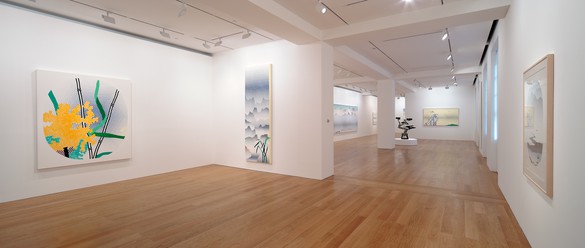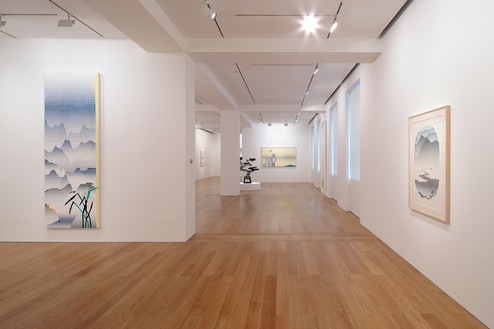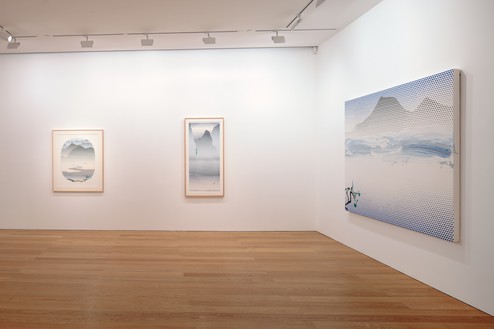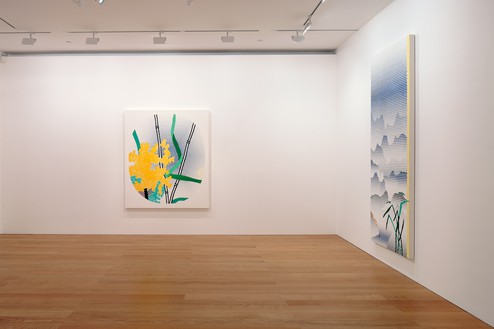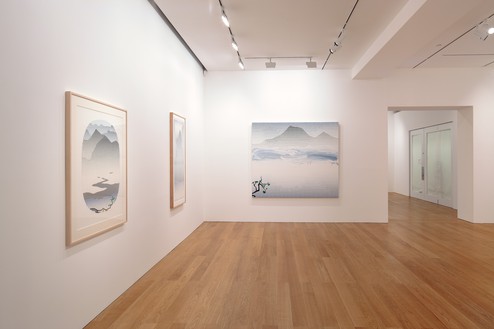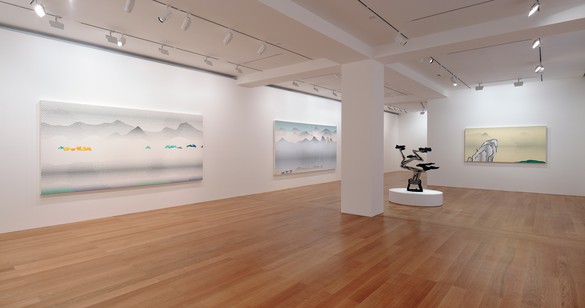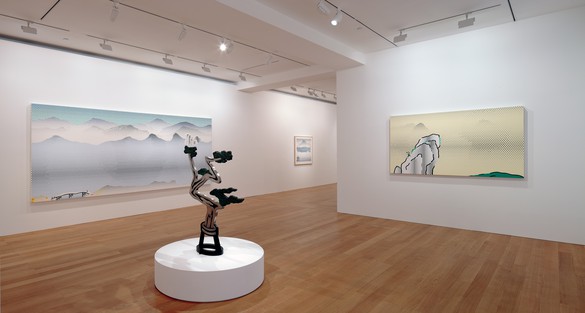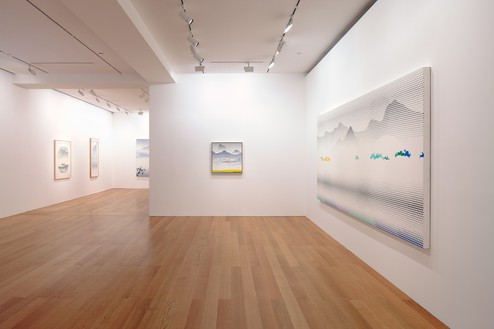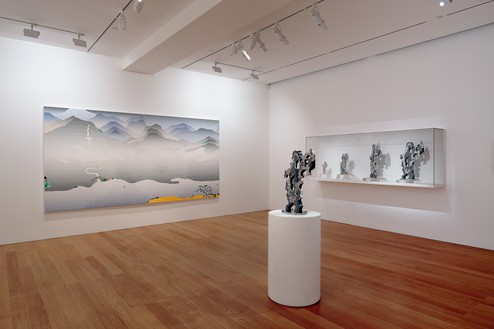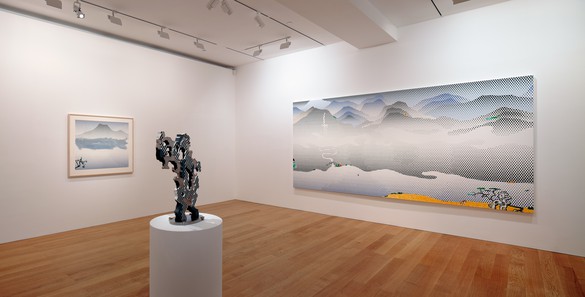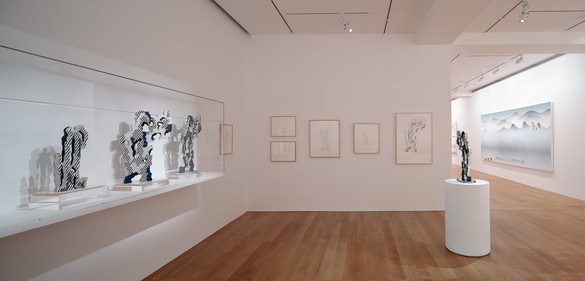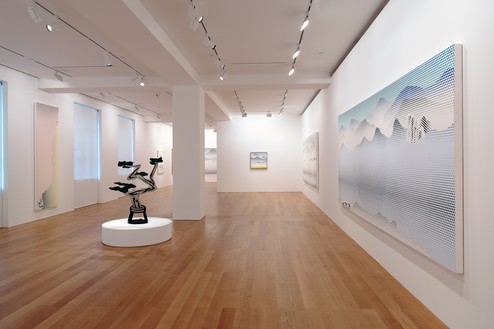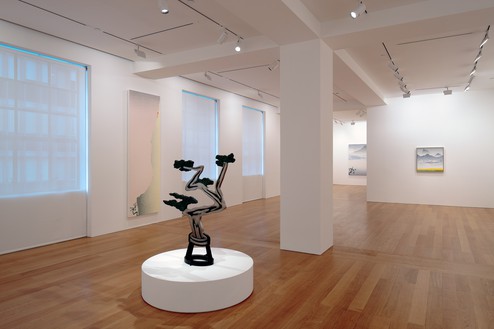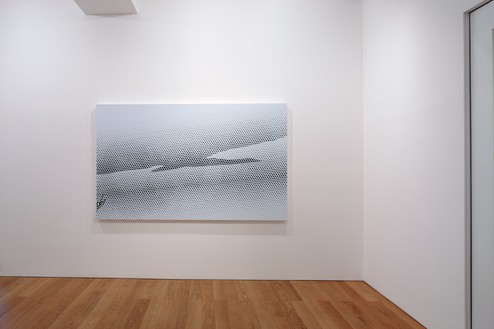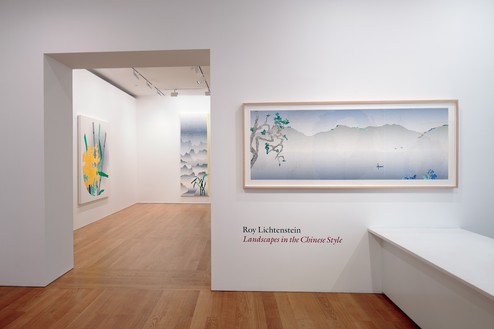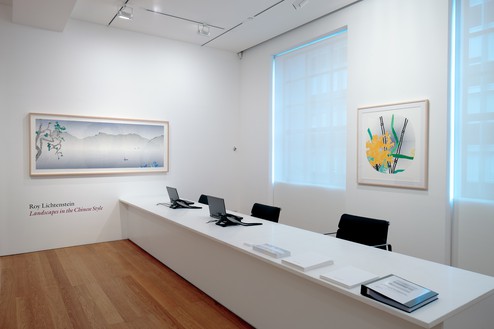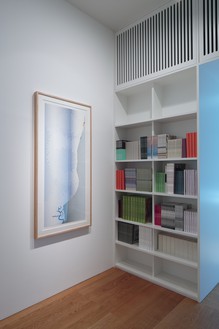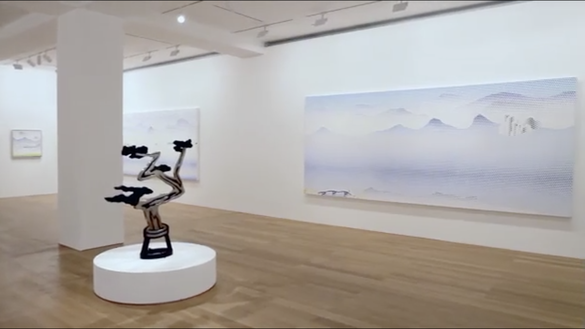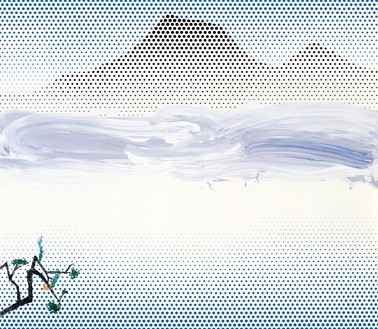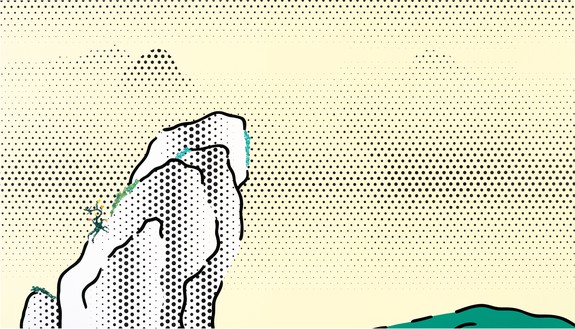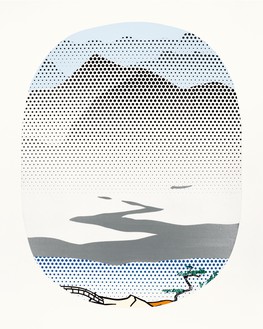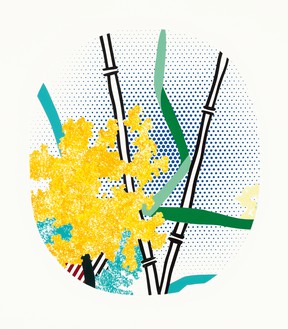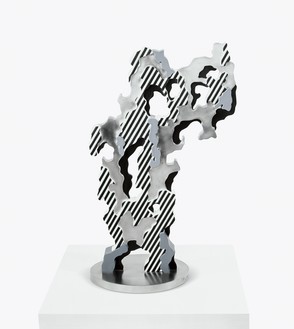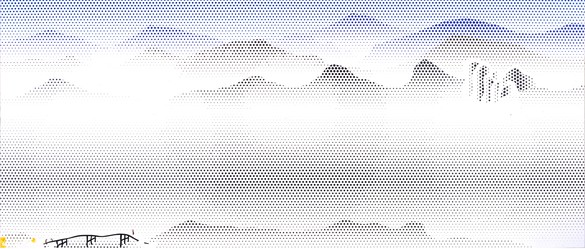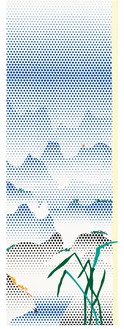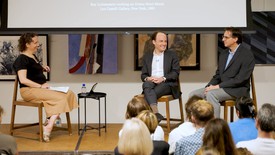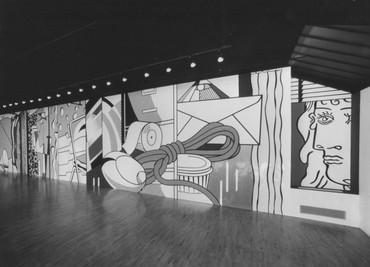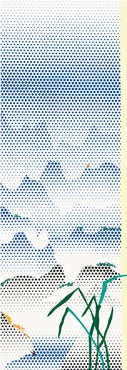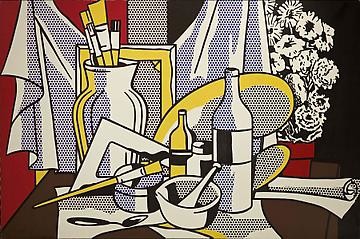About
I think [the Chinese landscapes] impress people with having somewhat the same kind of mystery [historical] Chinese paintings have, but in my mind it’s a sort of pseudo-contemplative or mechanical subtlety. . . . I’m not seriously doing a kind of Zen-like salute to the beauty of nature. It’s really supposed to look like a printed version.
—Roy Lichtenstein
Gagosian is pleased to present an exhibition of Roy Lichtenstein’s Landscapes in the Chinese Style.
Although Lichtenstein will always be synonymous with Pop art, he continued to make inventive new work for almost three decades beyond the 1960s, during which he had become famous for his distinctive use of popular cartoon images and commercial painting style. An engagement with the work of other artists and cultures is a defining trait of Lichtenstein’s oeuvre. He constantly mined antecedent imagery and took inspiration from a diverse array of sources, from comic strips and advertising slogans to classical architecture and the art of the European modernists. Beginning in the 1940s, he turned to art-historical styles and in the 1970s he employed them once again as well as quoting his own works—for example, rendering his subject in a way that conflated Expressionist or Cubist style with his own signature method of painting.
Seizing on traditional Chinese painting, in particular from the Song Dynasty (960–1279 CE), Lichtenstein garnered inspiration on how to craft the delicate, ethereal atmosphere so implicit to Landscapes in the Chinese Style from the monochromatic prints of Edgar Degas featured in a 1994 exhibition at the Metropolitan Museum in New York. He was struck by Degas’s ability to suggest the features of a landscape with just a few strategic swathes of gray, thus allowing an unformed, nebulous shape to stand for exacting form. Lichtenstein also visited exhibitions of East Asian art in New York, Washington and Boston, and perused exhibition catalogues—which may partly account for the emphasis on the secondary nature of his source imagery, deriving from reproductions of original works rather than from the works themselves.
Share
Artist
Download
In Conversation
Irving Blum and Dorothy Lichtenstein
In celebration of the centenary of Roy Lichtenstein’s birth, Irving Blum and Dorothy Lichtenstein sat down to discuss the artist’s life and legacy, and the exhibition Lichtenstein Remembered curated by Blum at Gagosian, New York.
In Conversation
Daniel Belasco and Scott Rothkopf on Roy Lichtenstein
Gagosian and the Art Students League of New York hosted a conversation on Roy Lichtenstein with Daniel Belasco, executive director of the Al Held Foundation, and Scott Rothkopf, senior deputy director and chief curator of the Whitney Museum of American Art, New York. Organized in celebration of the centenary of the artist’s birth and moderated by Alison McDonald, chief creative officer at Gagosian, the discussion highlights multiple perspectives on Lichtenstein’s decades-long career, during which he helped originate the Pop art movement. The talk coincides with Lichtenstein Remembered, curated by Irving Blum and on view at Gagosian, New York, through October 21.
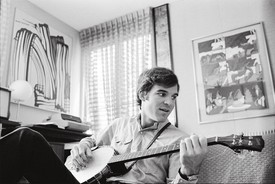
Roy and Irving
Actor and art collector Steve Martin reflects on the friendship and professional partnership between Roy Lichtenstein and art dealer Irving Blum.

Donald Marron
Jacoba Urist profiles the legendary collector.
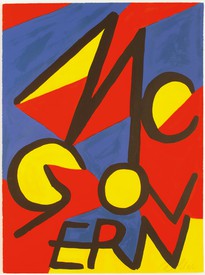
The Art History of Presidential Campaign Posters
Against the backdrop of the 2020 US presidential election, historian Hal Wert takes us through the artistic and political evolution of American campaign posters, from their origin in 1844 to the present. In an interview with Quarterly editor Gillian Jakab, Wert highlights an array of landmark posters and the artists who made them.
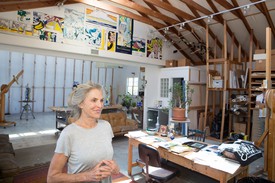
In Conversation
Dorothy Lichtenstein
Dorothy Lichtenstein sits down with Derek Blasberg to discuss the changes underway at the Lichtenstein Foundation, life in the 1960s, and what brought her to—and kept her in—the Hamptons.
